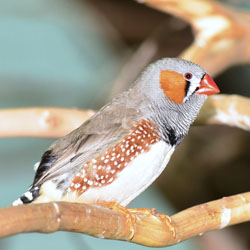Neural responses of birds to sound sequences
Birds are particularly adept at recognising syntactic patterns. Scientists set out to investigate potential similarities in neuronal processing of syntax between birds and humans with EU funding of the project SYNTAX (Neurophysiology of birdsong syntax perception). Using an array of 64 intracerebral electrodes, researchers recorded electrical activity from populations of neurons in auditory and song system nuclei during stimulation with artificial song-like sequences. The team used the zebra finch, a widely studied animal model of speech and language-related neural mechanisms. Due to the nature of the experiment, it was performed under anaesthesia, specifically isoflurane. This anaesthetic induces a sleep-like state in which primary and secondary cortical areas still respond in a stimulus-specific way to complex sequences, including natural song. Unexpectedly, researchers identified spontaneous travelling waves of both individual (action potential) and population (field potential) activity throughout most of the forebrain, both inside and external to auditory areas. This activity has also been seen in the cerebral neocortex. Researchers then investigated changes in this activity in auditory cortex as a result of stimulation using artificial sound sequences based on natural song syllables. One of the most important project results was the finding that the zebra finch exhibits both memory-based stimulus-specific adaptation and rule learning. Until now, the sequence rule learning that is key for human syntax capabilities has only been studied behaviourally in non-human animals with highly controversial results. SYNTAX went on to identify neural response patterns consistent with neural processes that involve prediction of future input based on short-term rule learning. In other words, this activity could reflect short-term predictability of syllable occurrence within a sequence. The results expand the utility of the zebra finch animal model to include a role as a comparative neural model system for syntactic rule learning. They could also lead to better understanding of changes in evoked responses reflecting a change in expected stimulus sequence (mismatch negativity). The phenomenon has been implicated in a number of cognitive functions and has been linked to disorders including dyslexia and psychiatric diseases. Establishment of an animal model of syntactic rule learning will no doubt have broad-reaching impact.
Keywords
Sound sequences, birdsong, syntax, rule learning, neurophysiology



